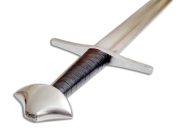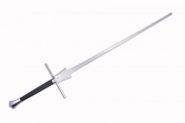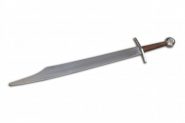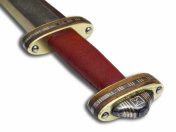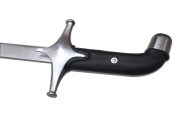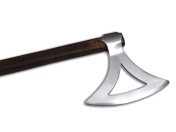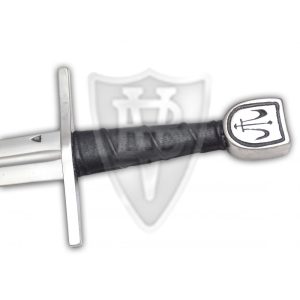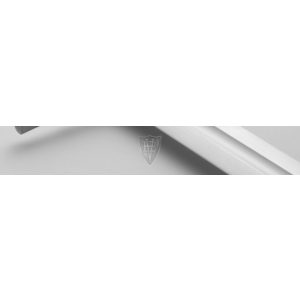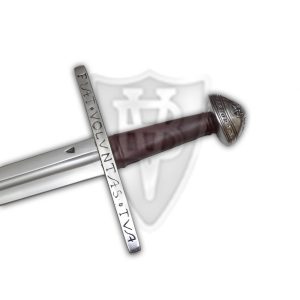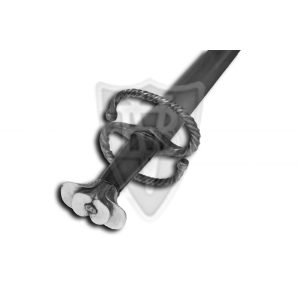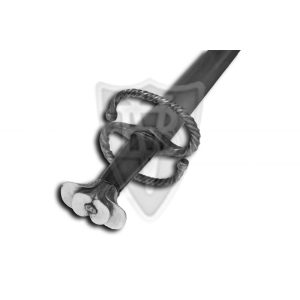Reconstructions
I create custom works and I'm happy to assist you to design your personal custom sword.
Or I can produce accurate authentic replicas of historical swords.
Lead time of custom works could be much longer compared to seriel works.
Prices are based on agreement.
Here You can find a few samples of my custom works.
Pear form pommel was decorated with cross motifs, cross made with a decorated iron plate.


Sharpening a sword blade before or after assembling the sword.
During sharpening, the blade loses its original thickness, making it more flexible and lighter, but also more fragile, of course.
The use of sharp swords is a training exercise that requires practice and knowledge, which must be exercised with extreme caution!
Damage and deflection of the swords are primarily due to cutting errors, so these damages are not warranty problems!
Twohand longsword for re-enactment, with a diamond blade. It has a tempered blade, and a strong ringguard.
Grip is covered with leather.



The sword can be characterized by short cross and relatively smaller pommel. Fitment is decorated with plant motifs.
This type of sword can be viewed in the National Museum of Ireland.
The blade is made of 51CrV4 steel, pommel and guard are made of yellow brass.



Our Colleagues can help You with exact information about the waiting time!
Featured with decorated pommel and the cross with engraved inscript.




Our Colleagues can help You with exact information about the waiting time!
Katzbalger, 16. század


Our Colleagues can help You with exact information about the waiting time!
Katzbalger from the XVI. Century, with a sharp blade.
The blade was made of 51CrV4 steel, heat treated, ideal for test cutting.


Our Colleagues can help You with exact information about the waiting time!
Such type of sword was found in Konyár, Hungary.
It appeared in many European Regions.


Our Colleagues can help You with exact information about the waiting time!
This type of sword was in use in German speaking regions; however it was traded in all Europe.
It can also be found in the Hungarian National Museum.


Our Colleagues can help You with exact information about the waiting time!
This sword was used in the 1st half of the XV. Century, mostly in the southern region.
This type of hilt was mostly used with ridged blade, we offer this sword with a wide and flat HEMA blade.


Our Colleagues can help You with exact information about the waiting time!
Sarmatian sword with ridged (rhombus cross-section) blade and ringpommel.
Made for re-enactment, with 1 year breakage warranty.

Our Colleagues can help You with exact information about the waiting time!

